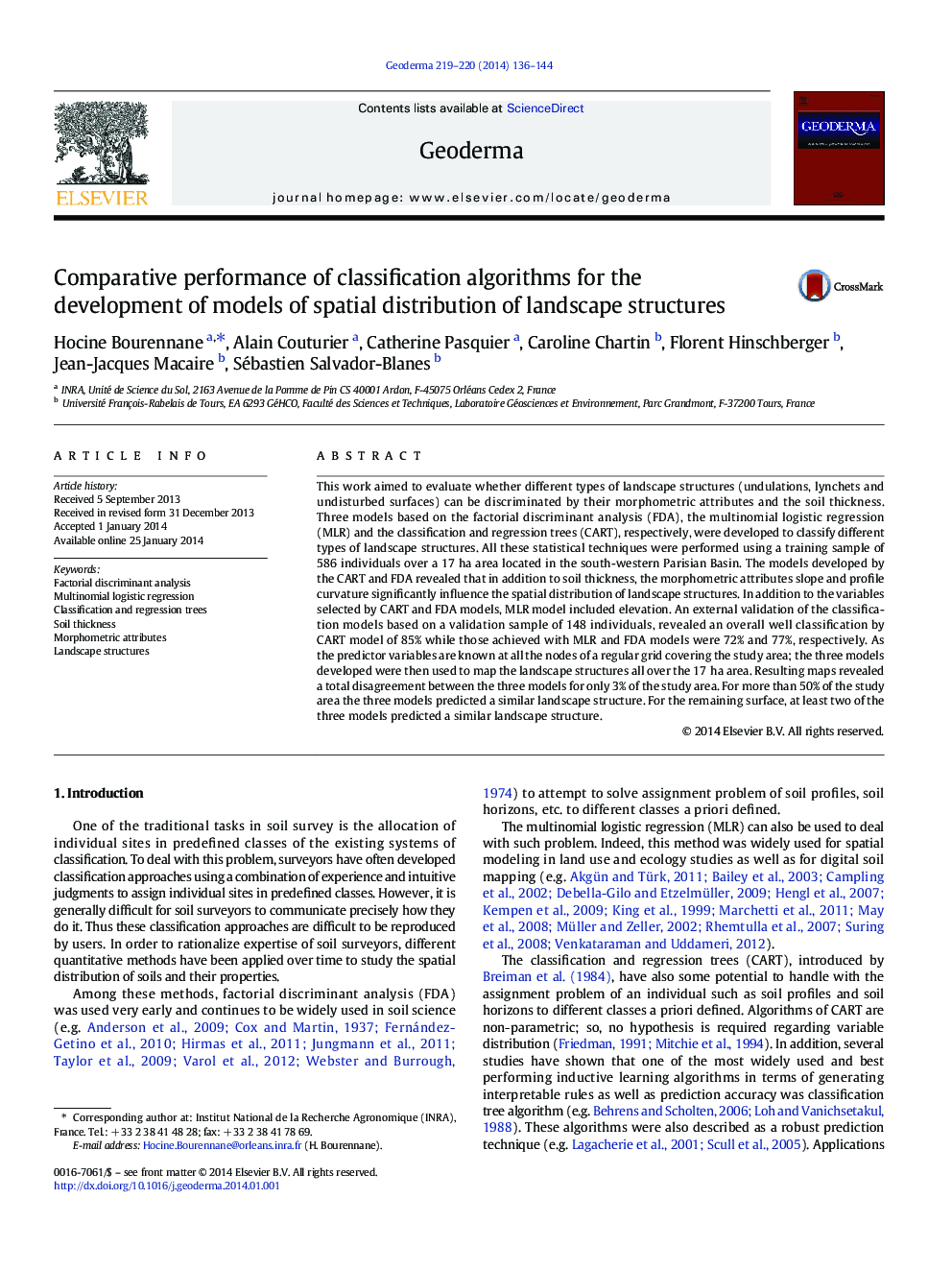| کد مقاله | کد نشریه | سال انتشار | مقاله انگلیسی | نسخه تمام متن |
|---|---|---|---|---|
| 4573380 | 1629475 | 2014 | 9 صفحه PDF | دانلود رایگان |
• Anthropogenic landform structures were statistically differentiated.
• The models tested are all appropriate for classification of the objects considered.
• We suggest the CART model as it gives classification rules in natural language.
This work aimed to evaluate whether different types of landscape structures (undulations, lynchets and undisturbed surfaces) can be discriminated by their morphometric attributes and the soil thickness. Three models based on the factorial discriminant analysis (FDA), the multinomial logistic regression (MLR) and the classification and regression trees (CART), respectively, were developed to classify different types of landscape structures. All these statistical techniques were performed using a training sample of 586 individuals over a 17 ha area located in the south-western Parisian Basin. The models developed by the CART and FDA revealed that in addition to soil thickness, the morphometric attributes slope and profile curvature significantly influence the spatial distribution of landscape structures. In addition to the variables selected by CART and FDA models, MLR model included elevation. An external validation of the classification models based on a validation sample of 148 individuals, revealed an overall well classification by CART model of 85% while those achieved with MLR and FDA models were 72% and 77%, respectively. As the predictor variables are known at all the nodes of a regular grid covering the study area; the three models developed were then used to map the landscape structures all over the 17 ha area. Resulting maps revealed a total disagreement between the three models for only 3% of the study area. For more than 50% of the study area the three models predicted a similar landscape structure. For the remaining surface, at least two of the three models predicted a similar landscape structure.
Journal: Geoderma - Volumes 219–220, May 2014, Pages 136–144
